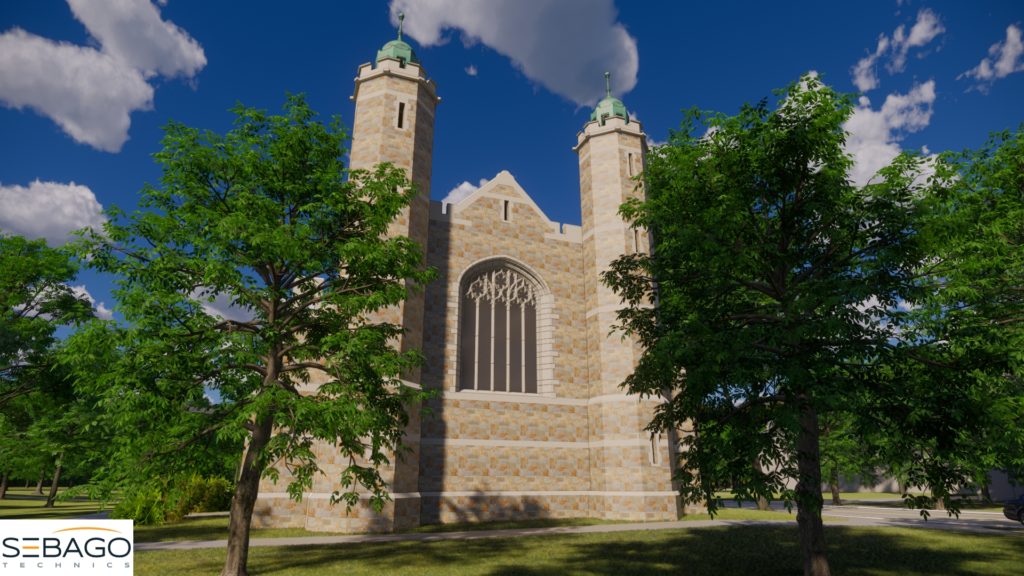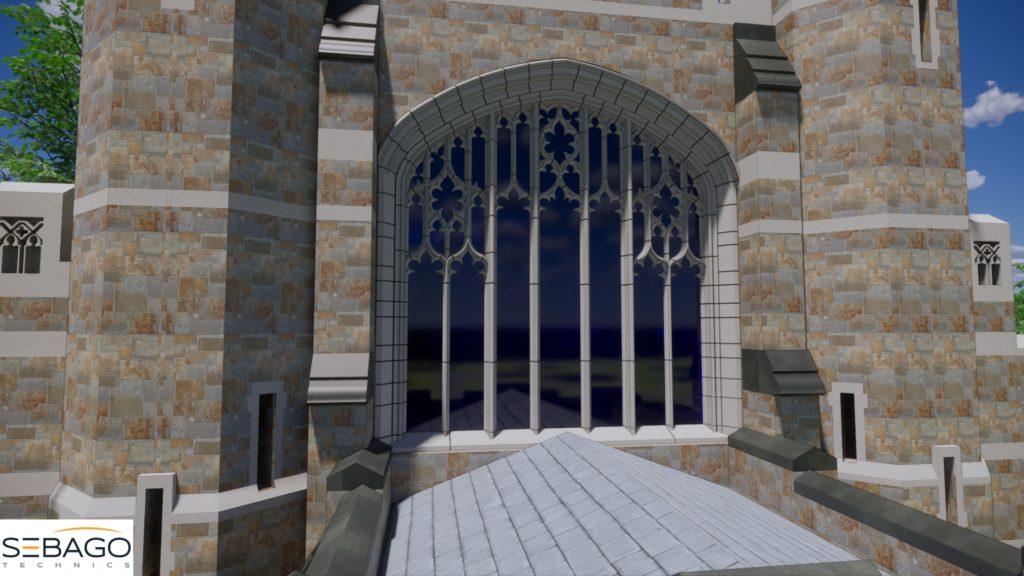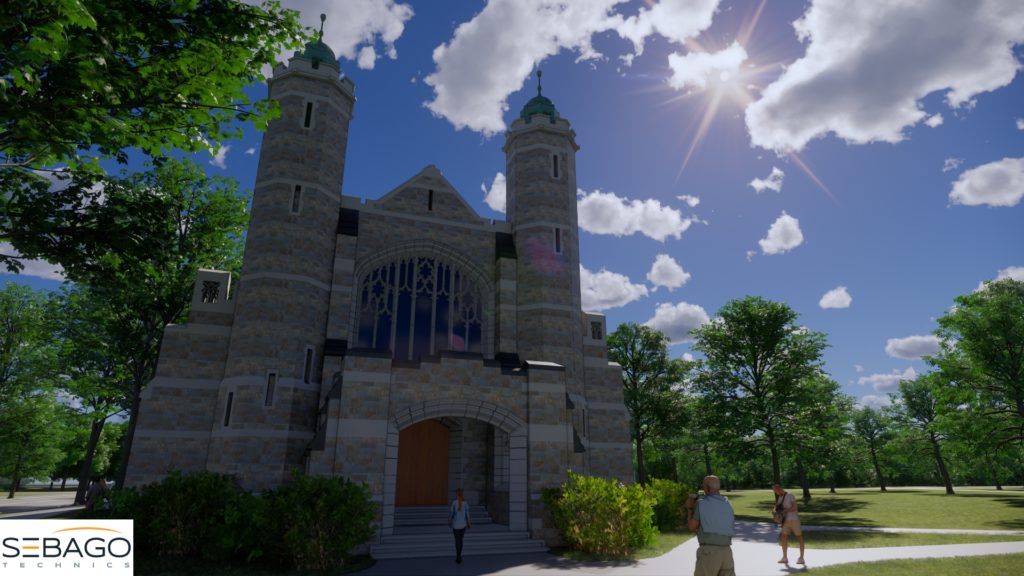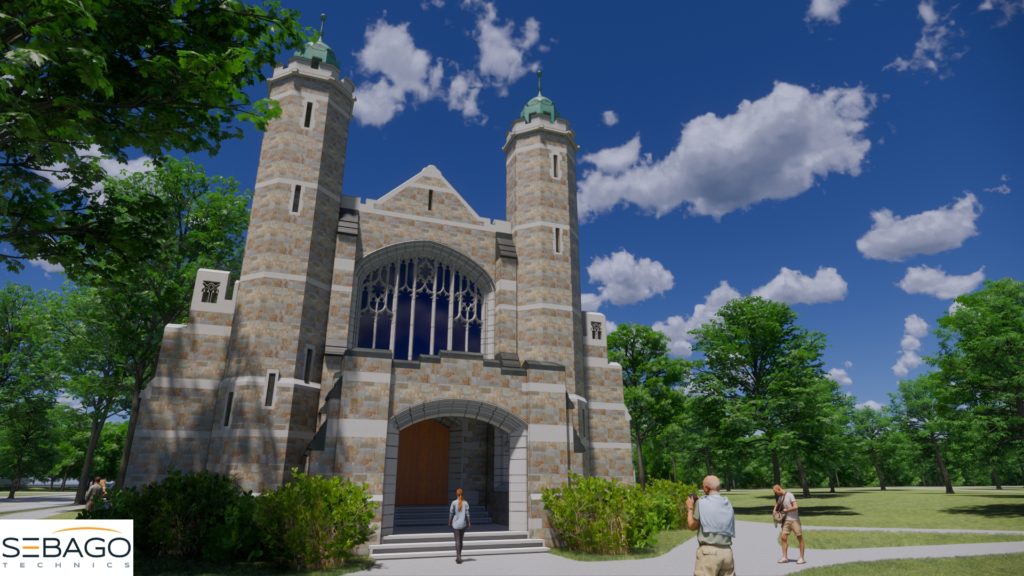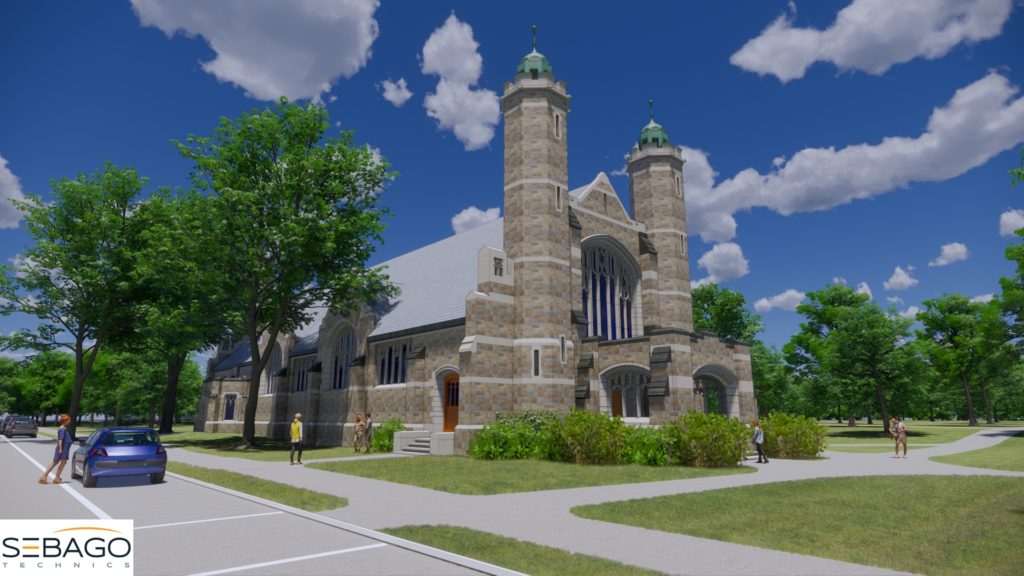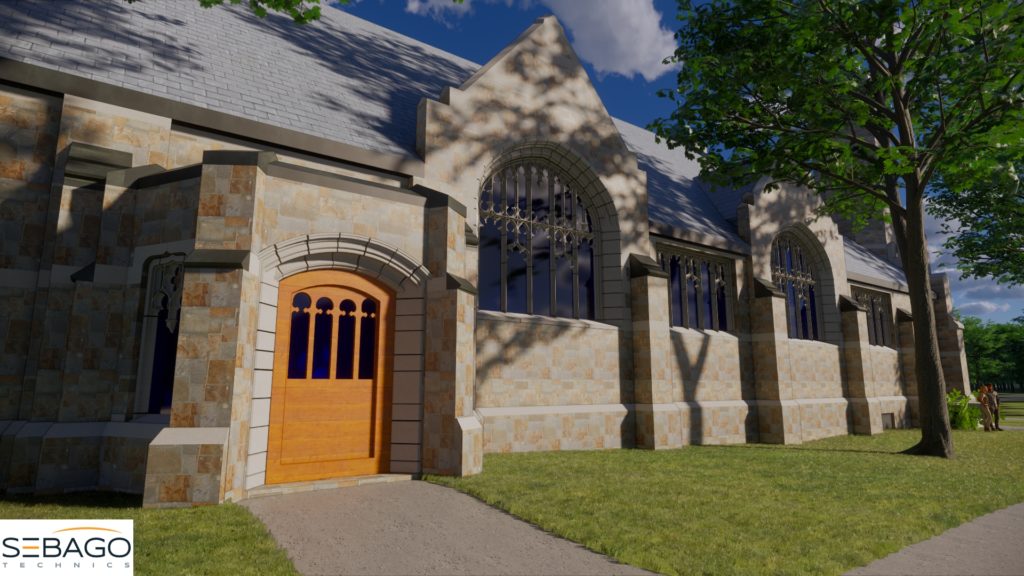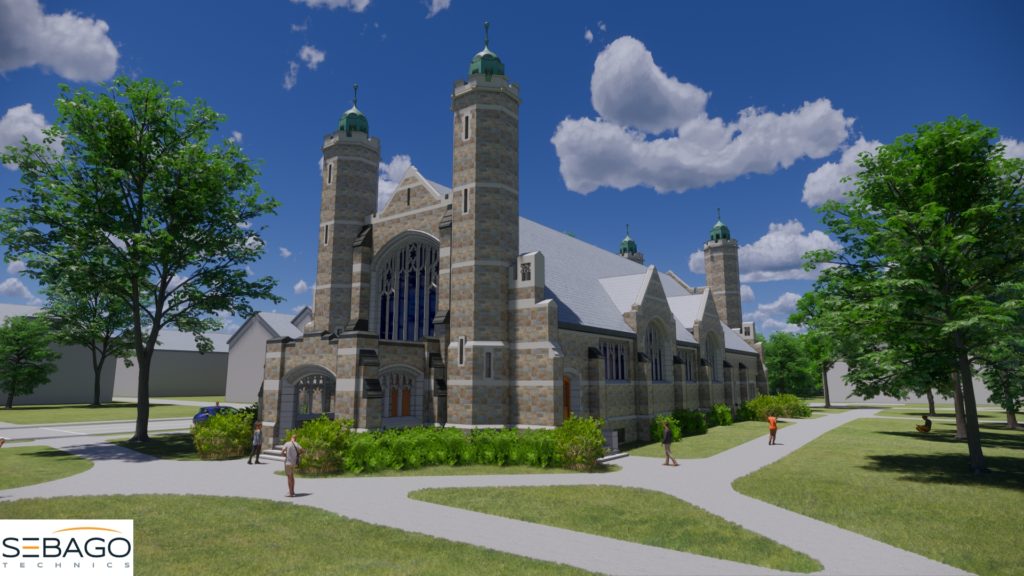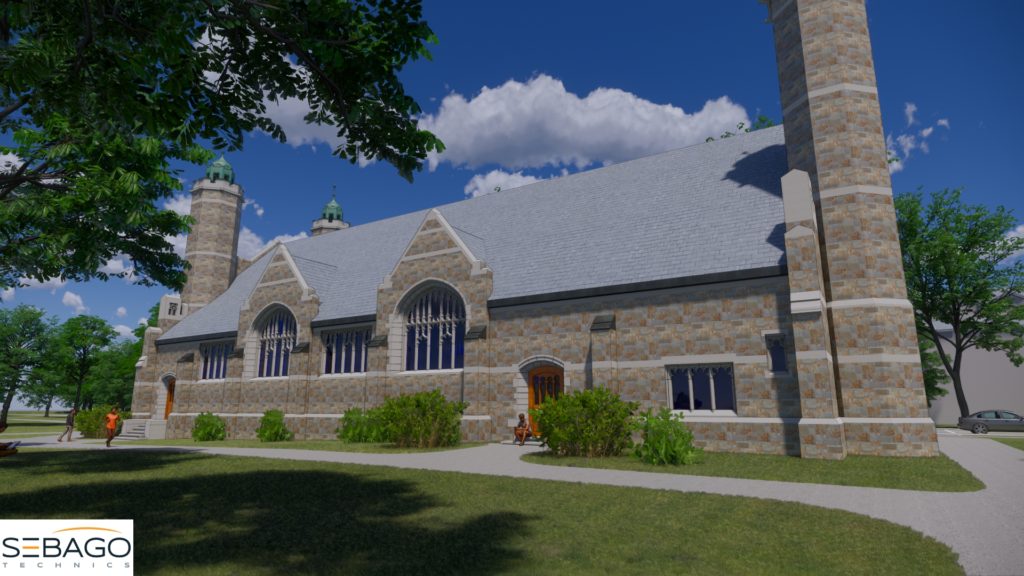Lewiston, Maine
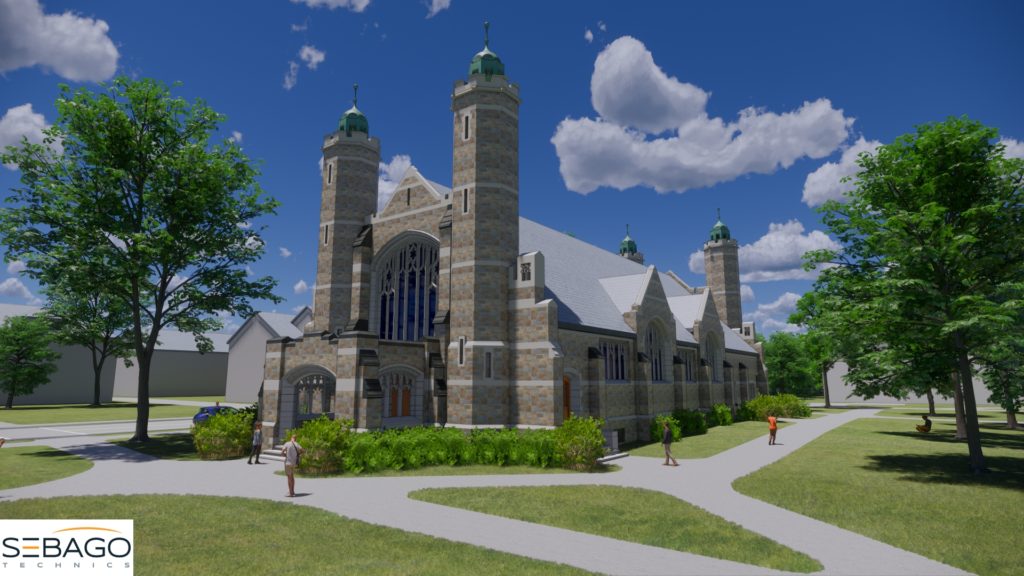
Sebago Technics utilized high definition scanning and produced a fully 3D model of the Peter Gomes Chapel, located at Bates College in Lewiston, Maine. The chapel was originally built in 1913 and is under restoration by Consigli Construction. Northern Design Precast Inc. will fabricate the new tracery assemblies based on the model generated by Sebago Technics. The renderings show how the new assemblies will look in the chapel.
Sebago Technics laser scanned and modeled all large stained-glass windows, entry doors, selected exterior feature stones/ tracery, as well as entry stairs and entryways making up 85% of the historical features of the Peter Gomes Chapel located on the Bates College campus. The subject, a rectangular window, was originally removed in pieces by a specialty precast contractor, from which physical latex molds were formed and used to replicate the existing concrete window frame for replacement. The original test window was completely removed and out of service for a duration of 4 months during the physical replication/replacement process.
The overall goal of the high definition scanning and subsequent modeling exercise was to expedite the replication process and reduce the overall project timeline, and reduce the timeframe as to which the onsite construction would take place. Sebago created a 3D Revit model for each component tracery piece of the test window which was then used to create a digital replica mold. These recreated window components were then compared to the original replica castings for variances. Minimal variances were observed during the trial analysis, a new process flow for replication/reproduction was instituted for the remainder of the project scope.
This new workflow will increase the mold process 2x, by removing the requirement for negative casting molds of physically removed tracery pieces offsite, accompanied with the cost and time saved associated with the use of single representative castings by digitally averaging the geometry of several similar tracery pieces into a single mold type. The remaining data is in sequence for mold replication using a CNC program and large sheets of molding foam to create the remainder tracery mold pieces.
Once the molding foam is cut from the CNC process, the pre-cast contractor team completes the casting form prep and installment of the proper material reinforcement. Once cast, the tracery elements are processed through quality control, piece marked, and packaged for shipment to the project site.

